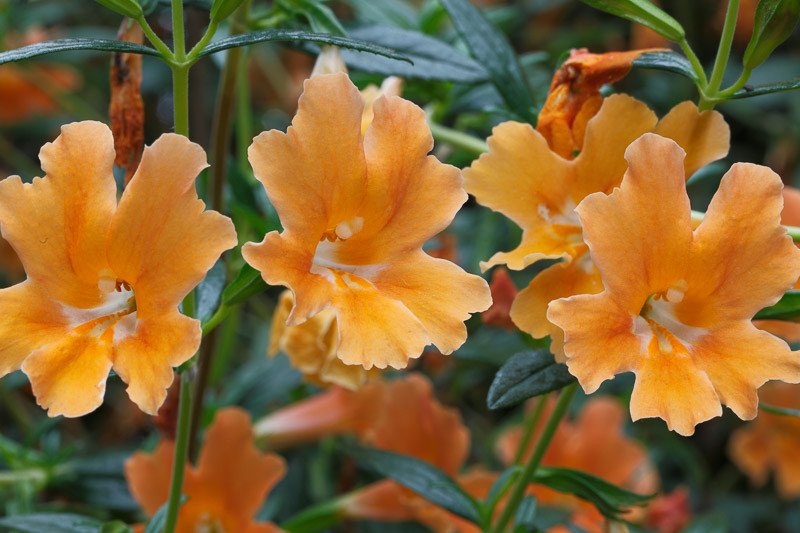
Sticky Monkeyflower
Sticky monkeyflower (Diplacus aurantiacus):
General information:
Sticky monkeyflower gets its name after the flowers which resemble a monkey’s face! In addition, due to the sticky resin that is produced by its flowers, it is called the sticky monkeyflower. The resin, and color of the flowers attract various pollinators like hummingbirds and bees. The flower prefers full sunlight in coastal areas, whilst it likes partial shade in inland gardens.
Appearance:
Its flowers can vary in color, including orange, red, yellow, and white. Its leaves appear like basil leaves, and are small and slender. The flowers typically bloom in warmer months, and are usually yellow or orange.
Plant growth, season, and dormancy:
Sticky monkeyflower is a shrub-type plant, and grows up to 3.9-5 feet tall and 5 feet wide. It has a moderate growth rate, and remains evergreen year round. Lastly, its flowering seasons include: winter, spring and summer.
Landscaping information:
Sticky monkeyflower requires both partial shade, and full sun. It is an extremely low moisture plant, and requires 1-2 times a month watering regimen. The plant can tolerate various difficult soils, but requires soil with proper drainage. It thrives in soil with a p.H. level of 5-8. Lastly, it can tolerate cold temperatures as low as 15ºF.
How to use:
This plant is typically used for hummingbird gardens, butterfly gardens, bee gardens, bird gardens, and for its deer resistance.
Pollinators helped:
Sticky Monkeyflower helps support the following pollinators:
-Hummingbirds
-Insects
-Moths
-Butterflies






